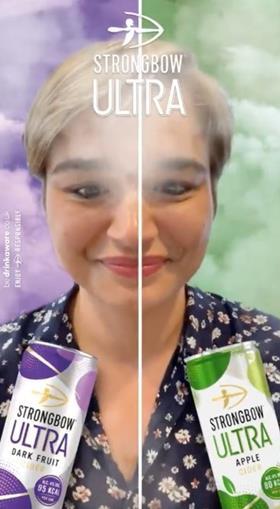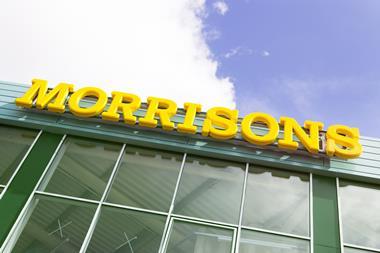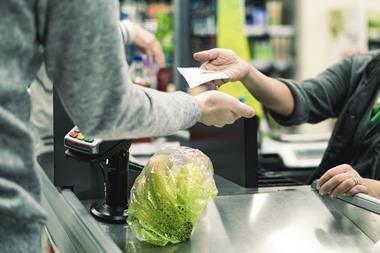Feverish competition for attention has made it harder than ever to cut through. Snapchat explains how to use experiences to create compelling marketing with better sales opportunities.
If the average supermarket is a smorgasbord of choice for shoppers, it’s got nothing on the options competing for their attention as they make their way to and from the store.
The key culprit is the smartphone. On average Brits check their phones every five minutes, according to a 2020 study by the LSE, which noted that “many of these interactions are unconscious and based on habit”.
Habits can inform many of the other distractions that we are exposed to daily, including billboards, radio chatter and TV ads. Younger generations are also spending more time on social media, which has increasingly gravitated towards short videos delivered at high speed.
Put simply, audiences are overloaded with choice. As consumers we know that it’s a struggle to focus on the important things, and the same is true for brands battling an onslaught of media choices.
For marketers the conundrum is how to invest limited media budgets to get attention. And that’s especially true as the cost-of-living crisis pushes retailers to focus on familiar brands at the expense of challengers seeking to cut through.
But however established a brand is, it’s the right attention that matters. Not so long ago, reach was the key metric that marketers measured themselves on. Digital channels were hailed as the answer to shrinking TV viewership – notwithstanding that they were a cause of these declines. They could offer more precise targeting, tracking and optimisation than old media could ever hope for.
It may be because of these promises that advertisers are moving away from measures of reach and towards the quality of audiences being targeted. Mass reach is important, but if billions of impressions isn’t translating into useful attention and sales, the overall viewing figures can mislead.
Platforms are therefore paying more attention to what kinds of content makes brands stick out in consumers’ mind long after the ad has passed before their eyes. And the evidence suggests that experiences are what drives attention and builds connection.

Creating experiences
When it comes to social media, not all platforms deliver the same experience. Some have unfortunately become associated with negativity, with users even exiting certain social networks in search of a more enjoyable experience.
Much of what separates positive experiences on social media from negative ones is the unique architecture of each platform. Different networks encourage different kinds of connections, whether it be with strangers over a shared interest or your nearest and dearest.
In the case of Snapchat, three-quarters of users come to the platform to connect to their closest circle, and staying connected with friends and family is also the top reason that people use the app[Neuro-Insight].
It’s one of the factors that means the platform is happier than all of its rivals. In fact a staggering 91% of users say they are happy when using Snapchat[Global Alter Agents].
Many other social networks are designed around sharing entertainment clips, information or news, making for a different experience. Conversations users have with friends and family are more intimate and personal than those had with other acquaintances.
When an app is dominated by close circle conversations, it benefits all types of content. Users that feel happy on a platform are more likely to pay attention to and trust what they see, and more likely to engage, whether it’s digitally or in the outside world.
It’s therefore unsurprising that a platform like Snapchat sees similar levels of engagement whether content comes from friends and family or brands and creators. For other social platforms, paid-for content can see engagement fall by a fifth compared to organic content[Neuro-Insight].
It means that an environment built on real relationships drives real influence for brands. And it’s creating opportunities for brands to do their most creative and impactful storytelling.

How brands can create real engagement
As a medium based on real relationships that leads to genuine, personal experiences, Snapchat is an especially well-placed platform for brands looking to create real engagement and positive attention, as well as cut through the noise and generate strong return on ad spend (ROAS).
With a friend-first mindset, Snapchat users are not passively scrolling, but actively snapping and engaging. Those attentive seconds are what turns eyeballs into impact, achieving results for marketers.
A recent study found that Snapchat non-skippable video generates twice the attentive seconds of peers, while augmented reality (AR) ads shown within the camera carousel generates five times the attentive seconds of rivals[Lumen Research].
Users who experience AR Lens ads are also 3.5 times likelier to make a purchase from the advertising brand than viewers of conventional social media ads[BLS studies] – a demonstration that quality attention is key to achieving business results.
To optimise tracking of these metrics and more, Snapchat has recently partnered with Circana (formerly IRI). Making use of the GeoLift tool, Circana can better determine how a paid media campaign has affected purchasing behaviour and revenues, capturing data across most retailers.
Beta testing for the service has shown promising results for Heineken Silver, a lighter version of the famous lager launched in the UK in May 2022, and Strongbow cider, which underwent a rebrand in March. Separate campaigns generated £2.83 and £2.49 ROAS for Heineken Silver and Strongbow respectively, 2x and 1.7x the category benchmarks .

It’s the latest success in Heineken’s longstanding marketing relationship with Snapchat, with the beer brand using the platform to target the 18-34 audience. “We’ve seen some huge success across multiple brands within the portfolio, and we are continually looking to expand upon our assessment of the platform,” says The Heineken Company UK media director Olya Dyachuk.
“As we are always looking for ways to prove effectiveness of our communications on both brand and sales, we were interested in testing the new Circana ROI measurement solution on Snapchat. We will look to continue utilising the measurement solution next year, at a more granular level, so as to understand more about the different variables driving this positive performance.”
It’s a sign of how real relationships matter for both users and brands. Standard reach is no longer a good way of driving attention – marketers must focus on users’ experiences. With its happy, receptive audience, Snapchat is the place to do it.
Find out more here



















